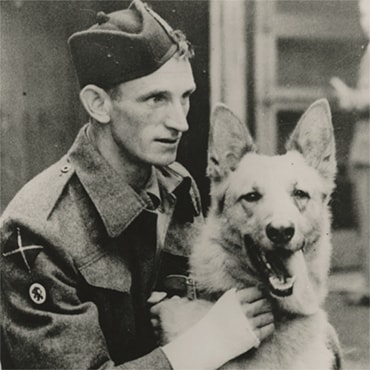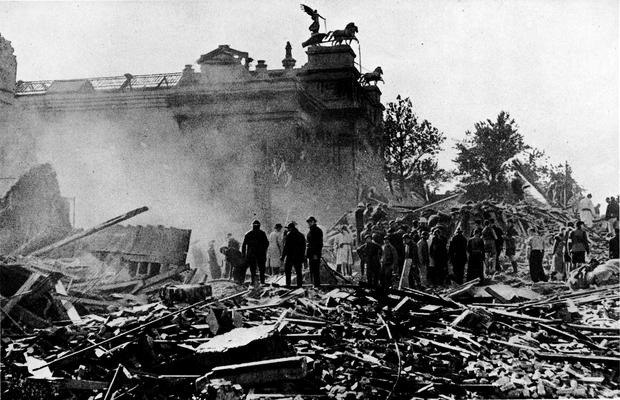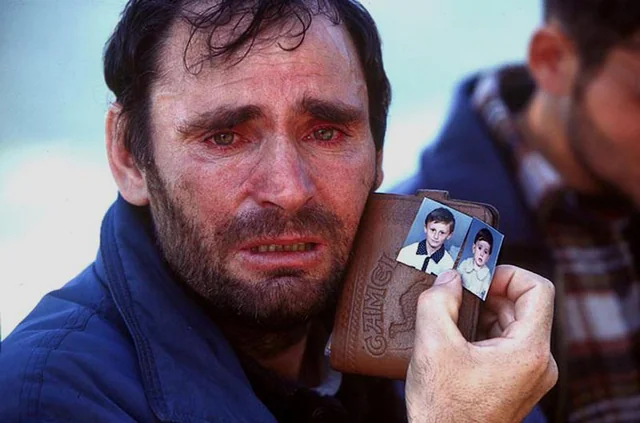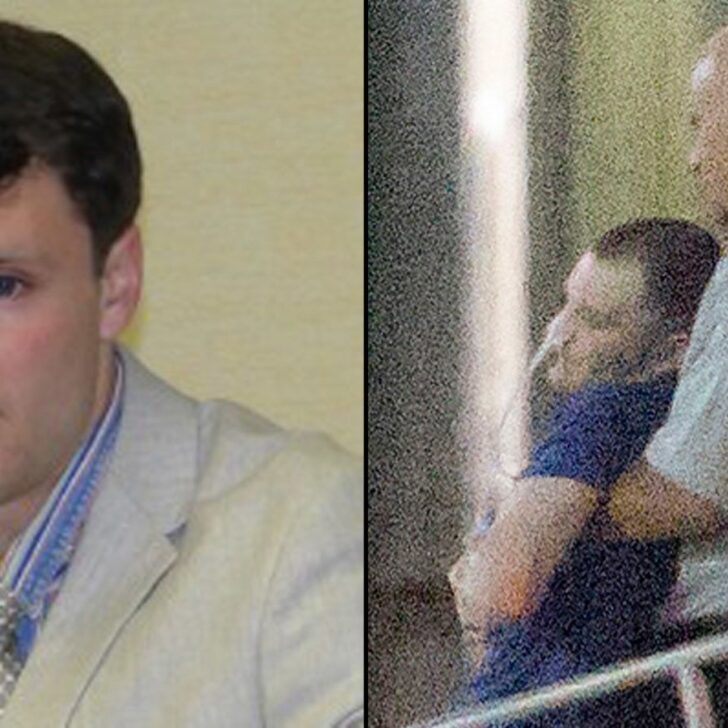The Second World War produced a level of suffering unparalleled in the course of human history. But despite the carnage unfolding around them, untold scores of people decided to take action.
Whether it was showing above-average courage on the battlefield, conducting risky operations deep behind enemy lines, or breaking through racial, ethnic, or age barriers to prove themselves, this list of ten heroes, in no particular order of greatness, demonstrates some of the best of humanity by putting others before themselves.
1. How a Navy Lieutenant Saved A Fellow POW From Certain Death


After the Japanese attacked Pearl Harbor, they also launched a simultaneous invasion of much of Southeast Asia and the South Pacific. Part of these invasion plans included the Netherlands East Indies in January 1942.
When the Japanese invaded the Netherlands East Indies, the Allies there were woefully outnumbered and outgunned.
Despite being up against an enemy, several factors were superior to them in terms of manpower and equipment; the Allies put on the best defense they could, including the joint Dutch-Australian-American naval task force.
While this task force was older and smaller than the Japanese, they put up a furious defense of the island chain. Among these forces was the USS Pope, a destroyer whose executive officer was Lieutenant Richard Antrim.
Over the next six weeks, the Pope and other ships in the task force fought numerous battles against the Japanese until they were defeated in the Battle of the Java Sea.
After evacuating his shipmates, LT Antrim found himself the most senior officer who had survived the battle. After spending several days afloat in life rafts, the Japanese picked them up and took them ashore as prisoners of war.
Once ashore at a POW camp in the Celebes islands, it became abundantly clear pretty quickly that life was going to be brutal and the Japanese would do everything they wanted to make the Americans’ lives a living hell.
Among the new rules and regulations of the camp was for prisoners to bow deeply whenever encountering a Japanese guard.
One day in April 1942, Lieutenant Junior Grade Allan Fisher apparently did not bow deep enough for a guard’s liking. This enraged the guard, and he began to beat the man mercilessly with his baton.
For his part, LT Antrim tried to intervene and ask the guards what the man did. However, the guards paid no attention to him and continued beating the man.
As the scene unfolded, a large crowd of prisoners and guards began to form. Some more guards joined in on the melee and began kicking the man. Soon, the camp commandant arrived on the scene and ordered that the prisoner receive fifty lashes.
Knowing that LTJG Fisher would not survive this, Antrim yelled, “Stop!” and everyone went quiet. He then did something incredible.
Antrim told the camp commandant to please stop beating the man and that he would take the remainder of his punishment.
Confused and stunned that an American POW would be so bold as to challenge Japanese authority and sacrifice himself, the commandant merely bowed and walked away.
But despite his immense heroism in that moment in saving that man’s life, his deeds would not be recognized until after the war, when he and his comrades were freed.
Finally, in 1947, he received his rightfully earned Medal of Honor from President Truman in a White House ceremony.
2. How Sister Greaves Saved Countless Soldiers From Death

Born in 1911, Sister Sheila Greaves became a practicing nurse in her early twenties and worked in various civilian hospitals before joining the Imperial Military Nursing Service in 1938.
Because of this timing, she was present with the British Expeditionary Force in France when Germany invaded. After serving in France and being part of the force that was evacuated at Dunkirk, Sister Greaves continued to serve as a nurse in other theaters.
From 1941 to 1943, Sister Greaves served as a nurse in the Middle East. In 1943, she followed her units as the British unit she was with fought alongside American units as they liberated Sicily and moved on to Italy.
Despite the good progress in Italy, the Allies soon ran into stiff German resistance that forced them to launch a bold amphibious operation around Anzio in 1944. It was here on the beaches of Anzio that Sister Greaves really distinguished herself.
She was in charge of Casualty Clearing Stations Number Two and Fifteen on the beaches. These clearing stations treated some of the most severely wounded men who would have to be evacuated by sea back to the UK.
On March 14, 1944, Sister Greaves was busily working over casualties as she normally did. Despite the front lines having pushed far off the Anzio beachheads, the nurses still worked under constant German artillery and air attacks.
On that fateful day, the German Luftwaffe began another attack on the beaches, and it was here that she knew she had to act.
As the German planes swooped in, they began dropping bombs and firing machine guns within 200 yards of the main collection point for her two clearing stations. Despite other staff running for cover, she ran towards the danger.
She knew that there were now new casualties that needed treatment as well as helping the severely wounded to safety who were vulnerable on the beach.
During this attack, she saved countless lives by rescuing men and rendering aid to new casualties. For this act, she was awarded the George Medal, one of Britain’s highest awards for bravery for civilians.
3. Heroic Army Private Saved His Comrades From Drowning

African-American soldiers in the US military faced all kinds of discrimination both at home and in the military.
However, despite how they were treated, they did not let themselves be deterred from doing their duty. There could be no better example of this than Private George Watson.
Private Watson wanted to contribute to the war effort and join a combat arms unit. However, the US Army at the time only allowed African Americans to enlist in combat support roles.
As a result, Private Watson joined a Quartermaster unit, which was in charge of supplies.
In the spring of 1943, his regiment was ordered to the Pacific, bound for New Guinea. Though the trip there was largely uneventful, fate would strike as the ship neared New Guinea.
A squadron of Japanese aircraft overtook the transport ship not far off the coast. As bomb after bomb rained down on the ship, it soon became clear that trying to save the ship would be hopeless. Because of this, the ship’s Captain ordered the crew to abandon the ship.
As American soldiers and sailors went overboard, some made it into life rafts while many others did not. Being a strong swimmer, Private Watson knew he had to do something to help his buddies who could not swim at all.
Though he could have easily swam to one of the life rafts nearby, he placed others before himself. Private Watson swam up to soldiers who could not swim and helped them into life rafts.
He repeated this feat time and time again, all while Japanese planes flew overhead and fires burned all around him. Finally, after helping all those he could, he began to swim towards a life raft when the transport ship began to sink.
As the stricken ship slipped beneath the waves, the suction from the ship tragically forced him down with it.
Though his body was never recovered, he was awarded the Distinguished Service Cross posthumously, the first African-American soldier in the war to receive the United State’s second-highest award for valor.
4. The Italian Alamo: How A Lone African American Soldier Saved His Entire Battalion

Another African-American soldier who distinguished himself in battle was Lieutenant John R. Fox.
By 1944, African Americans were allowed to serve in segregated combat units in combat due to the high casualties suffered up until this point in the war.
Lt. Fox found himself as an artillery forward observer in the 92nd Infantry Division. After arriving in Italy in August 1944, the division fought several months of hard fighting until it came to hold defensive positions in northwestern Italy around Christmas 1944.
During this time, Lt. Fox’s unit was spread dangerously thin, with about 1,000 men covering nearly 30 miles of front-line positions.
Because of this, Lt. Fox set himself up in one of the tallest buildings in the Italian mountain village of Sommocolonia to observe enemy movements in the area.
But unknown to him, the enemy had different plans in store.
On Christmas night, 1944, the Germans and Italians planned a major offensive intended to smash through in that area and throw the Allies off balance.
That night, German troops infiltrated the town wearing civilian clothes. Soon, they began sniping at the African-American soldiers and local Italian partisans who had joined them.
After hours of intense sniping activity, a large Italian-German force began their offensive. Within hours of this starting, German troops began the attack around four o’clock that morning.
As the Germans advanced, the Americans and their Italian allies soon realized they were outnumbered. However, as they tried to withdraw, snipers inflicted heavy casualties.
Throughout the night, Lt. Fox continually exposed himself to call in and correct artillery fires on the approaching enemy. Despite his best efforts, the Germans continued closing in on his position.
By eleven that morning, the Germans were swarming around his observation post, and he called in one last transmission.
He requested that the artillery fire directly on his observation post. His friend, Lt. Otis Zachary, was on the receiving end of the line and refused to do so.
However, at Lt. Fox’s behest, Lt. Zachary asked his regimental commander what to do, and he relayed it to divisional headquarters. Within minutes, the division commander had approved the fire mission.
With that, artillery shells soon began raining all over the observation post. Lt. Fox made no more transmissions after that.
However, his heroics blunted the German attack and allowed hundreds of American soldiers and Italian partisans to escape.
About a week later, allied troops retook Sommocolonia from the Germans. They discovered the rubble that was once Lt. Fox’s observation post, which was now his tomb.
Though not surviving the strike, there were also more than 100 dead Germans around his observation post. However, his self-sacrifice would go unnoticed for decades.
Unfortunately, due to systemic racism in the Army at the time, his recommendation for a Distinguished Service Cross was buried. He would not be awarded that until 1982, and in 1997, that medal was finally upgraded to the Medal of Honor.
5. One Dog’s Determination To Protect His Owner At All Costs

Although most of the heroes during World War II were humans, there were actually a few animal heroes, too. One of these was a German Shepherd named Rifleman Khan.
Khan was a purebred German Shepherd who was donated to the British government in 1942. At the time, the British military was rapidly expanding its use of military working dogs for use in guard duty, finding bombs, and even as attack dogs.
For this reason, Khan was assigned to his handler, Lance Corporal James Muldoon, of the Cameronians (Scottish Rifles). After several years of training together, L/Cpl Muldoon’s unit went into action in northwest Europe.
After serving together through much hard fighting in Italy, Muldoon’s unit was transferred to the Western Front to help liberate the Netherlands.
During this major battle that become known as the Battle of the Scheldt, Muldoon’s unit was to do their part by helping liberate the Dutch island of Walcheren.
As the men advanced toward the island that chilly November day in 1944, the Germans began pouring withering artillery and mortar fire into the assault craft.
As Muldoon’s craft was about 200 yards from shore, it was destroyed by an enemy mortar shell, with the survivors falling into the water. Rifleman Khan swam ashore and looked around for his handler.
However, seeing that he was still struggling in the surf from his equipment, the dog swam back through 200 yards of fire-swept water, grabbed his handler, and pulled him to safety on the beach. Exhausted, Khan collapsed next to his handler, who had been severely wounded.
Several months later, Rifleman Khan would be awarded the Dickin Medal, the highest award for gallantry a military working animal could receive.
After recovering from his wounds, L/Cpl Muldoon was reunited with Khan, who lived with his handler in peace for the rest of his days.
6. G.I. Joe, The Pigeon That Saved The Lives Of 100 Soldiers

Another animal that performed an act of courage that singlehandedly saved over one hundred lives is the pigeon, G.I. Joe.
During World War Two, the US bred and trained over 54,000 pigeons. The use of carrier pigeons continued into World War Two because it was seen as an undetectable way of communicating.
In a day and age where enemy forces had much more sophisticated technology to snoop in on radio communications, having a carrier pigeon was seen as the best way of preventing messages from getting intercepted. But where does G.I. Joe fall into this conflict?
Born in North Africa, the pigeon was trained as a two-way carrier pigeon for use in Italy.
Given to a British infantry unit as a backup means of communication, the pigeon was present when the men of the 169th Infantry Brigade attacked and took the German-held village of Calvi Vecchia several hours ahead of schedule. But there was a problem.
Because the British soldiers had taken the village early, the American Army Air Corps was still scheduled to bomb it.
After their radios were unable to establish communications with the air base, the British soldiers released G.I. Joe with an urgent message to stop the air attack.
In an impressive feat, the bird flew twenty miles in twenty minutes and arrived just as the planes were preparing to take off.
Due to the pigeon’s impressive flight, the lives of over 100 British soldiers and numerous civilians were saved. For his actions that day, G.I. Joe would also be awarded the Dickin Medal for bravery.
7. How Eight Children Survived The Holocaust By Dressing Up Like Clowns

The occupation of Denmark during World War Two has been described as one of the less heavy-handed occupations by the Nazis but still nonetheless brutal.
After the surrender of Denmark in 1940, the Danes were allowed to govern themselves for the next three and a half years. However, all that would change in August 1943.
After months of labor strikes, sabotage, and ambushes by resistance fighters, the Nazi government demanded the Danish government accept draconian measures to “regain control of the country,” as they put it.
The Danes did not want to do so, so in August 1943, they resigned in protest. The next day, the German government declared martial law in the country and sent in the military to take over. That is where our young heroine comes into play.
Known to history only as Kristen, this young 16-year-old teenager was doing her best to live a normal life. When not going to school or playing with her friends, she volunteered her time as a clown at the local children’s hospital.
During these visits, she would entertain the young children with stories, jokes, face painting, and the like. The children loved seeing her, and it always brought smiles to their faces.
One day, during one of her usual visits, Kristen was pulled aside by a woman named Mrs. Berger. Mrs. Berger, like many other Danes, ran her own makeshift orphanage.
Before and after Nazi rule, she had helped take in large numbers of Jewish children, many of whom were refugees from other countries.
And while Mrs. Berger did her best to home these children with Christian parents to pass off as their own, there were only so many families to go around.
For her part, Mrs. Berger hid the remaining eight Jewish children in her own home. On that day, she pulled Kristen aside and asked if she could entertain the Jewish children at her home.
Due to the increasing number of rules against Jewish people, Mrs. Berger’s orphans only left home to go to school and synagogue, with no time to play. Kristen happily agreed.
Over the coming months, Kristen would always make a stop at least once a week at Mrs. Berger’s home to play with these eight Jewish orphans. Though of different backgrounds and religions, the children and Kristen formed a tight bond.
After school ended for the summer in 1943, Kristen told the children she would be living with her grandparents in the country but would return at the end of the summer.
Although sad, the children understood. Little did they all know what would happen in a few short months.
Upon Kristen’s return to Copenhagen in September, she found the city she left was gone. Now, armed German soldiers and police patrolled everywhere.
Jewish people were forced to wear a Yellow Star of David, and many people lived in constant fear of the unknown. Then, the unthinkable happened.
Kristen’s brother was an active resistance member. He stayed away from home to avoid putting his family in danger. However, one day, he came home and told everyone that beginning in October, all the Jews in Denmark were to be rounded up.
The resistance was making a plan to get every Jew out of the country to Sweden. Kristen knew time was of the essence. But what was the plan?
Resistance members soon promulgated that the plan was for all the Jewish people to be concentrated in various churches, schools, and homes, where they would wait for transport to take them to local fishing villages.
From there, fishermen would take them in a boat to neutral Sweden and to safety. However, the problem was getting people to these locations due to the plethora of armed patrols.
When it was time for Mrs. Berger’s children to move, they were stuck. Just outside the home was a large German patrol that was staying at a nearby building. Moving outside with a large group of people would attract instant suspicion and probable arrest.
To hide the children’s identities and deflect attention, Kirsten came up with a great idea.
Using her clown makeup, costumes, and whatever odd bits of clothing they could find around the house, she dressed up each of the children as clowns and made them look as ridiculous as possible.
The plan would be to march the children down the street in an impromptu clown parade and head toward the nearby church for safekeeping. If stopped, Kristen would say the children were merely going to a school play.
With their best clown costumes on, the group left the home and began marching down the street.
Of course, not long after leaving, a curious German patrol came up to Kristen and began questioning her. She gave the same line that the children were headed to a play and were going on their way.
At first, it appeared the Germans did not believe them, but a sympathetic Danish policeman overheard the conversation and said that his son was a part of the clown troupe, too.
With that, the Germans left, and Kristen escorted her clown troupe into the basement of a nearby church.
After collecting money from fellow Danes to pay for travel to Sweden, Kristen made the journey to the local fishing village, where she helped set up the safe passage. As a result, all eight Jewish children survived the Holocaust.
8. A French Teenager’s Mission To Save Those No One Else Could

The next hero on this list is also a teenager. Yojo was a Roma teenager who lived a nomadic lifestyle with his parents.
At the outbreak of World War Two, they had been living in Belgium, but after the Germans invaded, they relocated to southern France, where other Roma people had been congregating.
Still wanting to live their way of life despite the Fascist Vichy government trying to control them, Yojo and his family continued living life as they did before until the war came to them.
One summer afternoon, there was a commotion as people began gathering around. His father told them to run to safety.
After following his father’s orders, he later came to the woods to tell him that several British planes had been shot down and that several pilots had been picked up.
Those pilots were in safekeeping in a farmhouse nearby, and Yojo would need to deliver food to them.
During this time, it was not uncommon for the Roma people to make their living delivering goods with their wagons. Yojo used this as his cover story to go to the safehouse and meet the two pilots.
Upon meeting them, he could only smile as he did not speak English. But after the farmer gave him a slip of paper with a few English phrases he quickly memorized, Yojo left with his two new friends, Glen and Fred.
Yojo stowed the two pilots underneath a pile of hay in the wagon and stacked chickens and eggs on top of them. His mission was to take them as close as possible to the Spanish border and walk with them to ensure they made it across.
After spending several days on the road, they were nearing the border when a policeman stopped them. The Vichy policeman questioned what Yojo was doing in the rain.
Thinking quickly, Yojo responded that he was delivering chickens to a good friend and that he had promised him that the delivery would not be late. After shrugging him off, the teenager delivered his “chickens” to the safe house.
After dining with the farmer and his wife, she told them to eat as much as they could since anyone walking around with a sack of food would be suspicious.
She also instructed Yojo he was to guide the pilots through the vineyards at the base of the Pyrenees mountains. He would need to act as their foreman if questioned since the two pilots did not speak French.
With that, they continued on their way to the Spanish border. The journey was long and difficult due to the summer heat and rugged terrain. But thankfully, they did not encounter any more patrols as they made their way up into the mountains and into freedom.
For someone like Yojo, if he had been caught, surely, he and the pilots would have been sent to a concentration camp or, worse, killed. But he did not stop there.
Throughout the war, Yojo helped more than 100 people escape from France and into neutral Spain. Many of these people were British pilots, but also Jewish refugees and escaped prisoners of war were among the people Yojo selflessly helped.
9. Irena Sendler: The Savior Of Warsaw’s Youth

Another person who helped save untold numbers of Jewish children was Irena Sendler. Born to a Catholic family in Poland, Irena was a devout Catholic and social worker who dedicated her life to helping others.
After the Germans took over Poland in 1939, she stayed in Warsaw to continue helping even after the Germans walled off part of the city in what became known as the Warsaw Ghetto.
Because of Irena’s credentials as a social worker, she was allowed access to the ghetto that many people did not have under the guise of ensuring disease did not spread.
However, during these visits, Irena did more than just help take care of sick people and prevent disease; she also made connections with others inside the ghetto to save Jewish children.
Over the next three years, Irena made frequent trips inside the ghetto as a secret member of the Zegota or Polish Council to Aid Jews. She would help smuggle Jewish children out of the area and home them with Christian families outside the ghetto walls.
When doing so, Irena would also give the children new identities and teach them Christian prayers should the Germans ever question them.
Irena continued doing these selfless acts day in and day out for years under the threat of the death penalty if caught. However, she was undeterred and did her utmost to save the children.
But, despite several close calls, her luck would run out in October 1943. After being betrayed, she was arrested by the Gestapo and mercilessly tortured.
However, despite the intense physical pain she was put through, she never divulged any of the people who were helping her or the children she had rescued. After weeks of torment that yielded nothing, the Germans decided to execute her.
But thanks to the Polish resistance, the German guards slated to kill her were bribed and instead released her. Irena then went into hiding but continued to support the rescue and care of Jewish people in other ways.
All told, Irena Sendler rescued at least 2,500 Jewish children from certain death, and in 1965, she was recognized as Righteous Among the Nations by the state of Israel.
10. HMS Jervis Bay And Captain Fegen: A Decision That Saved 32 Ships

In November 1940, the HMS Jervis Bay was preparing to lead a convoy of 37 merchant ships from the island of Bermuda to the United Kingdom. However, her Captain, Edward Fegen, was nervous about the journey.
This is because the Jervis Bay was not a purpose-built warship. In fact, she was actually a nearly 20-year-old passenger liner that had been rapidly pressed into service to help guard merchant ships to free purpose-built Royal Navy ships for other purposes.
Instead of having top-of-the-line equipment and radar like modern warships, the Jervis Bay was equipped with seven 6-inch guns and two 3-inch guns, all from the late 1890s.
Despite this obvious disadvantage in terms of speed, maneuverability, and armament, the Jervis Bay set out to lead the merchantmen of Convoy HX-84 to safety. But fate would have other plans.
On the morning of November 5, 1940, the convoy was around 800 nautical miles south of Iceland when they encountered a lone merchantman called the Mopan.
Though Captain Fegen called out and asked if the Mopan wanted to join the convoy, her Captain refused. Unknown to the Mopan, the German pocket battleship Admiral Scheer was lurking about a hundred miles away.
The Admiral Scheer was one of Germany’s biggest, fastest, and most heavily armed merchant raiders.
Weighing in at 15,000 tons and armed with six 11-inch guns, eight 5.9-inch guns, and a top speed of nearly 30 knots, the Admiral Scheer outclassed and outgunned the Jervis Bay by almost every metric possible.
But at the time, Captain Fegen did not know the danger that was nearby and kept his speed low to allow the convoy to maintain position while the Mopan continued on.
Back on the Admiral Scheer, the spotting plane that had been launched that morning returned and reported the position of the Mopan, which had continued on ahead of the convoy.
Believing the Mopan to be the lead ship of the convoy, the Admiral Scheer pursued her. After spending most of the day catching up to her, she finally caught up to her late that afternoon.
Instead of fighting it out with the German ship, the Captain of the Mopan ordered his crew to abandon ship. The Admiral Scheer then started shooting into the Mopan at a distance of 300 yards.
However, the Mopan was more resilient than the Admiral Scheer had thought, and it took a long time to sink her.
Already incensed at this delay, the Admiral Scheer’s Captain made the best speed for the convoy to attack it before nightfall. As Admiral Scheer closed in on Convoy HX-84, Captain Fegen sensed the danger they were in.
At this moment, they were the only protection for this assortment of lightly armed merchants against one of Germany’s best battleships.
Instead of running and trying to save himself and his crew, Captain Fegen did the unthinkable. In a David vs. Goliath moment, he ordered the helmsman to come about and charge Admiral Scheer at the best speed.
As the Jervis Bay did so, the Captain of the Admiral Scheer became even more enraged. With sunset fast approaching, he would lose sight of this very juicy prize if he did not dispatch the Jervis Bay quickly.
For Captain Fegen’s part, he knew that he would not win this fight. However, he hoped to buy enough time for the rest of the convoy to escape Admiral Scheer’s clutches.
As the Jervis Bay came about, she opened fire with everything she had. However, her guns had little to no effect on Admiral Scheer, who was outside her range. Soon, shell after shell crashed into the Jervis Bay.
For his part, Captain Fegen stayed at his post on the bridge despite a painful wound to his right arm that rendered it useless.
Despite the immense courage of Captain Fegen and his crew, within twenty minutes, the Jervis Bay was a smoldering wreck quietly slipping beneath the waves, taking with her Captain Fegen and nearly 200 crew.
But their sacrifice was not in vain. Over the coming days, the Admiral Scheer only sank five of the vessels in that convoy. Had it not been for the head start the ships got from Captain Fegen, it would have been much worse for them.
For his actions that day, Captain Fegen received the Victoria Cross, Britain’s highest award for valor.
Sources
https://archive.org/details/worldwariitengre0000perr/page/24/mode/2up?view=theater
https://archive.org/details/heroesofworldwar0000beck/page/n3/mode/2up?view=theater
https://archive.org/details/heroesofworldwar0000bowe/page/68/mode/2up
https://archive.org/details/worldwariitimefo0000batc/page/66/mode/2up?view=theater
https://archive.org/details/worldwariianimal0000mose/page/10/mode/2up?view=theater
https://archive.org/details/elusivegloryafri0000brun/page/n3/mode/2up?view=theater
https://www.military.com/history/rear-admiral-richard-nott-antrim.html












Leave a comment